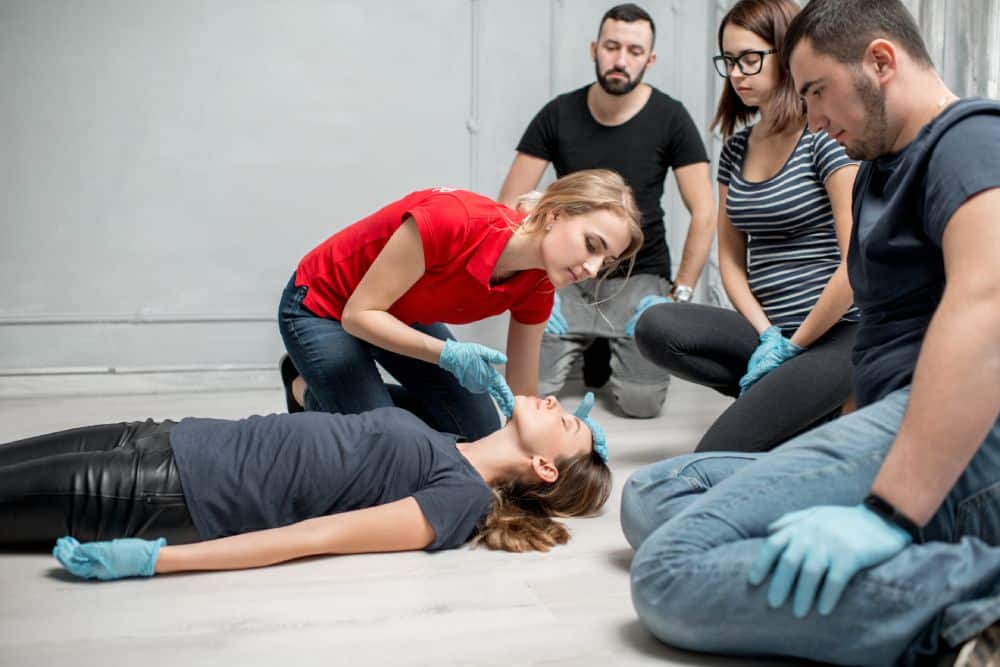Introduction
In our fast-paced world, emergency situations can strike without warning. Whether it's a minor injury, a medical emergency, or a dangerous scenario, understanding how to offer emergency treatment can make all the difference. This is where a First Aid course comes into play. Many people may wonder what they can acquire from such training, and this post intends to shed light on that.
By register in a First Help and mouth-to-mouth resuscitation course, you don't just learn about bandaging injuries or doing CPR; you outfit on your own with indispensable skills that could save lives. So, just what will you discover in a thorough training course? Allow's dive into the details.
First Help Essentials: What You'll Discover in a Detailed Course
Understanding First Aid
What is Very first Aid?
First help refers to the preliminary support provided to someone struggling with an injury or illness until professional medical aid arrives. It encompasses various strategies and abilities ranging from simple injury care to lifesaving methods like CPR (Cardiopulmonary Resuscitation).
hltaid009 CPR classesImportance of First Aid Training
Why Ought to You Take an Emergency Treatment Course?
Taking a First Aid course is important for several factors:
- Confidence: Understanding just how to respond in emergency situations can instill confidence. Life-Saving Abilities: The capacity to perform CPR or help with choking can conserve lives. Career Development: Several occupations call for qualification in initial aid. Community Responsibility: Learning means you can aid others effectively.
Overview of CPR
What is CPR?
CPR, or Cardiopulmonary Resuscitation, is an emergency procedure executed when somebody's heartbeat or breathing has actually stopped. It combines upper body compressions with rescue breaths to maintain blood flow and oxygenation up until expert assistance arrives.
The Framework of a Comprehensive First Aid Course
What Does an Emergency treatment Course Include?
An all-round First Aid and CPR course usually covers the following topics:
Introduction to First Aid Legal and Moral Considerations Scene Safety Basic Life Assistance (BLS) CPR Techniques Choking Relief Wound Care Management Burn Treatment Managing Shock Recognizing Clinical Emergencies Using an Automated External Defibrillator (AED)Legal Facets of First Aid
Are There Legal Effects Involved in Giving First Aid?
Yes, offering first aid does lug lawful duties referred to as "Do-gooder laws." These legislations shield individuals who help others in emergency situations, gave their actions are affordable and not reckless.
Scene Safety and security: The Very First Step
How Do You Make sure Scene Safety?
Ensuring scene safety entails analyzing the atmosphere prior to approaching the sufferer:
- Look for possible hazards (web traffic, fire). Make certain it's safe for both you and the victim.
Basic Life Support (BLS)
What Function Does BLS Play in Emergency Situation Situations?
Basic Life Support includes the principles of maintaining life functions up until additional clinical help shows up. This area covers crucial skills such as:
- Checking responsiveness Activating emergency solutions Performing top notch breast compressions
Advanced mouth-to-mouth resuscitation Techniques
What Are Advanced Techniques Covered in CPR Courses?
Advanced methods may include:

- Two-rescuer CPR Use of obstacle devices for rescue breaths Special considerations for infants and kids
Choking Alleviation Techniques
How Do You Aid Someone That is Choking?


Choking alleviation includes 2 crucial strategies:
The Heimlich maneuver for adults. Back impacts and breast drives for infants.Wound Care Management
How Do You Effectively Manage Wounds?
Effective wound monitoring entails:
- Cleaning the wound with saline or tidy water. Applying antibiotic ointment. Covering it with sterilized dressings.
Burn Treatment
What Work Techniques for Dealing With Burns?
Burn treatment differs by level:
Cool the burn under running water. Cover it with non-stick dressings. Seek clinical interest for serious cases.Managing Shock
How Is Shock Recognized and Treated?
Recognizing shock consists of seeking signs and symptoms like pale skin, fast pulse, or complication:
Lay the person down. Elevate their legs unless there are injuries preventing this. Keep them relax till help arrives.
Recognizing Clinical Emergencies
What Kinds of Medical Emergencies Ought To You Know Of?
Common clinical Child Care First Aid skills emergencies include:
- Heart strikes Stroke Severe allergies Understanding these conditions aids you act quickly.
Using an Automated External Defibrillator (AED)
How Do You Use an AED Correctly?
Using an AED entails turning it on, attaching pads according to illustrations on the gadget, and complying with voice prompts carefully.
Importance of Continuous Learning
Why Is Constant Understanding Important in First Aid Training?
Continuous understanding guarantees you stay upgraded on ideal practices and new methods in first aid care.
FAQs Regarding First Aid Courses
What Is Included in a Requirement Emergency Treatment Course?- A common program typically covers basic life support, injury administration, choking relief strategies, and legal considerations.
- Most courses range from 6 hours to 16 hours depending upon the deepness of material covered.
- Yes, upon effective completion of the majority of courses, participants obtain a first aid certificate, which is typically legitimate for 2 years.
- Yes! Numerous organizations provide online courses that give versatile understanding environments while still being effective.
- Absolutely! Hands-on method is important for mastering abilities like chest compressions and making use of AEDs effectively.
- Generally, there are no age constraints; nonetheless, participants need to be mentally proficient to learn these life-saving skills effectively.
Conclusion
Enrolling in a detailed first aid course gears up people with crucial expertise that can conserve lives throughout emergencies-- whether in the house, job, or out in public areas! From understanding basic life assistance treatments such as mouth-to-mouth resuscitation to finding out just how to manage injuries effectively or acknowledge indications of shock-- these training courses provide vital training that any individual can profit from!
As we browse with our every day lives loaded with changability-- what better means than preparing ourselves with knowledge gotten from structured training sessions focused on saving lives?
In verdict-- if you're contemplating taking up any type of type of first-aid training-- never ever hesitate! Outfit on your own today with these powerful devices because readiness really makes all the difference when every 2nd counts!